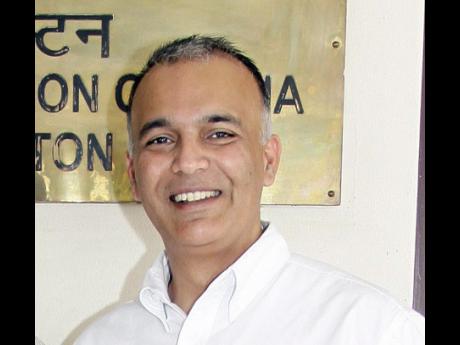Early lessons in disaster preparedness
The year 1907 is buried somewhere in history - not anywhere in the living memory of most people - but on January 14 of that year, on a sunny Monday afternoon, the Earth shook, and within the space of 20 seconds, three shocks reduced most of downtown Kingston to rubble.
The earthquake of 1907 has been described as one of the worst natural disasters recorded in history. This year marks 110 years since that earthquake struck Jamaica's capital - but it is a memory that is buried and forgotten in reams of yellowing pages in the annals of time.
But neither Mother Nature, nor her fury, has changed, and there are lessons to be learnt: to be prepared in the event of such disasters.
Around 13,000 kilometres away from Jamaica, in Sendai city, Japan, children are learning those valuable lessons at school.
Shichigo Elementary School, the third largest school in the city, was affected by the 2011 earthquake and tsunami.
The school, post the 2011 earthquake and tsunami, was nominated by the ministry of education for disaster-management training. The curriculum was developed by the teachers in the school, based on their experiences.
In second grade, students learn how to prepare and save themselves when an earthquake strikes - they scanned posters of photos of the streets of the route they take to and from the school.
The topic was to look at possible dangers in transit and each student wrote their ideas on PostIt notes. At the end of the teaching session, the teacher asked the students to read from their PostIt notes, which were pasted on the posters for later reference.
"The aim is to have a curriculum that can be adapted in different locations in Japan and training can be given on different scenarios," Masaki Nakatsuji, vice-principal of the school.
Grade two students were divided into groups as they studied a poster with a photo of their route about which they had to give their input on how they would react and save themselves if an earthquake struck. "I will run to a safe location and hide there," said one student. Her classmate added, "I will run away from the danger." And another girl said that she would cover her head with her school bag. "I will run away from the light post and hide in a safe place," was another student's suggestion.
The students are taught the risks and dangers of natural disasters but are encouraged to be calm and positive.
MORE EMPHASIS
Students of Grade four focus on safety and talk about solutions to the problem.
In a class, students filled out worksheets on the importance of protecting themselves at all times and being aware of their surroundings, and each had their recommendations. "These exercises," Nakatsuji said, "are an integral part of the school's curriculum, and especially after the March 2011 Tsunami, we are giving more emphasis to disaster preparedness and management."
As a part of the exercise, students are taken on field trips, along the routes they take from home to school, and familiarised with the shelters and spots where they can take refuge should an earthquake strike when they are in transit.
There are shops that have designated shelters for children on the premises.
Children also learn steps to take if there is torrential rain. There are two basic lessons that are reiterated. when there is an earthquake, they hide underneath the desks and are then evacuated from the schoolyard. In the case of a tsunami threat, the students are evacuated to the third floor.
The school actively collaborates with parents and the neighbouring communities. Once or twice in the school year, Nakatsuji informed, they have one drill each: to check the evacuation route in the event of an earthquake, and evacuation in case of a tsunami.
Students also participate in fire drills.
The school has allocated 30 hours in the year for grades one and two, and 35 hours in the year for grade three and above for disaster preparedness and training.
Shichigo Elementary School is developing a national curriculum on disaster preparedness based on its first-hand experiences with the deadly earthquake and tsunami that left more than 20,000 people dead in Sendai and surrounding regions.
"We learnt a lesson," said Tomoho Takahashi, principal. "And we are determined to pass down these lessons to the next generation so that they are better informed and equipped."
The visit to Japan was part of 'Pacific Islands and Caribbean Journalists' Programme' organised by the Tokyo-based Association for the Promotion of International Cooperation (APIC), with support from the Foreign Press Centre, Japan.





